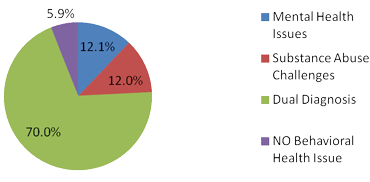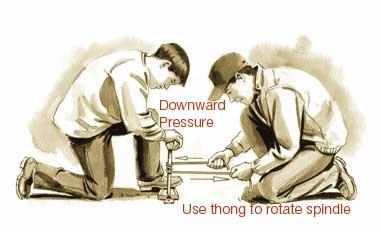From our friends at Survival Cave Food:
Homelessness and poverty in the America

The numbers are rising and the efforts are shifting! Help someone in need!
How do we define homeless?
A person who is homeless does not have a fixed, regular and adequate nighttime residence. This person may be sleeping on the streets, with friends or family, in cars or abandoned buildings or in shelters. Approximately ten percent of the homeless population lives on the street.
What causes homelessness?
Poverty from a lack of jobs at competitive living wages
A lack of adequate public supports and/or earned benefits
Lack of affordable housing and inadequate housing assistance
Lack of affordable health care
Domestic violence
Mental Health challenges
Substance use
Race percentage %
Hispanic 1.32%
Black 51.55%
White 6.64%
Several Races 1.04%
Unknown 38.9%

Behavioral Health
Many people experiencing homelessness have mental health challenges and substance use issues. Barriers to quality physical and behavioral health services make it difficult for these individuals to find appropriate care.

Other interesting facts:
-Families comprise nearly 40% of all who are homeless.
-According to the 2010 US Conference of Mayors report, Family homelessness increased by 9%.
-68% of the cities reporting in the 2010 Mayor's Report had to turn away homeless families with children because of a lack of available shelter beds.
-Among families who are homeless with children, the majority cited loss of a job as the cause, followed by the lack of affordable housing, poverty, low-paying jobs and domestic violence.
-42% of homeless children are under the age of 6.
-A child is born into poverty every 33 seconds.
-Families with children comprise one of the fastest-growing segments of the homeless population today.
-More than 15% of Americans live in poverty, including one in five children (22%), the highest rate in the industrialized world.
-Almost 60% of Americans will spend at least one year below the poverty line at some point between ages 25 and 75.
-There is no city or state anywhere in the United States where a worker making the minimum wage can afford a fair market rate one-bedroom apartment.
-The cost of rent and utilities for a typical two-bedroom apartment increased 41% from 2000 to 2009.
-2 million additional American children will fall victim to the foreclosure crisis over the next two years.
Age Distribution
Children in families constitute a significant portion of the shelter population on any given night. In 2011 the number of children sheltered in emergency shelters and transitional housing totaled 4,495.
(Includes emergency shelters and transitional housing only)

Gender by % of Total Homeless Population
Female (adult) Male (adult)
31.31% 38.92%
Female (children) Male (children)
15.01% 14.5%
(Includes emergency shelters and transitional housing)
Single versus Family
Single Family
53.60% 46.40%
(Includes emergency shelters and transitional housing)
How do we end homelessness?
-Develop effective solutions for those on the street including targeted outreach and appropriate facilities and services, particularly for persons with substance-abuse and mental-health problems.
-Strengthen the system of shelter and services that enable homeless persons to make the transition to stability and job readiness.
-Provide permanent solutions– jobs and housing–so that people can break the cycle of homelessness and become stable and productive citizens.
-Strengthen homelessness prevention programs so that no one ends up in shelters or on the streets. This includes reinvesting in economically vulnerable neighborhoods; improving the school system; making sure people have access to health care; and providing jobs at a living wage.
If you are unable to donate money or volunteer at a shelter, even a small sack lunch could mean huge difference to someone. Maybe they haven’t eaten in days; maybe they have been eating out the trash. Anyone can end up homeless. Just a string of bad luck and misfortune and you can be in the same position. We are not here to place judgment or lecture simply to reach out and help someone in need. You will walk away feeling good and grateful I promise!


















